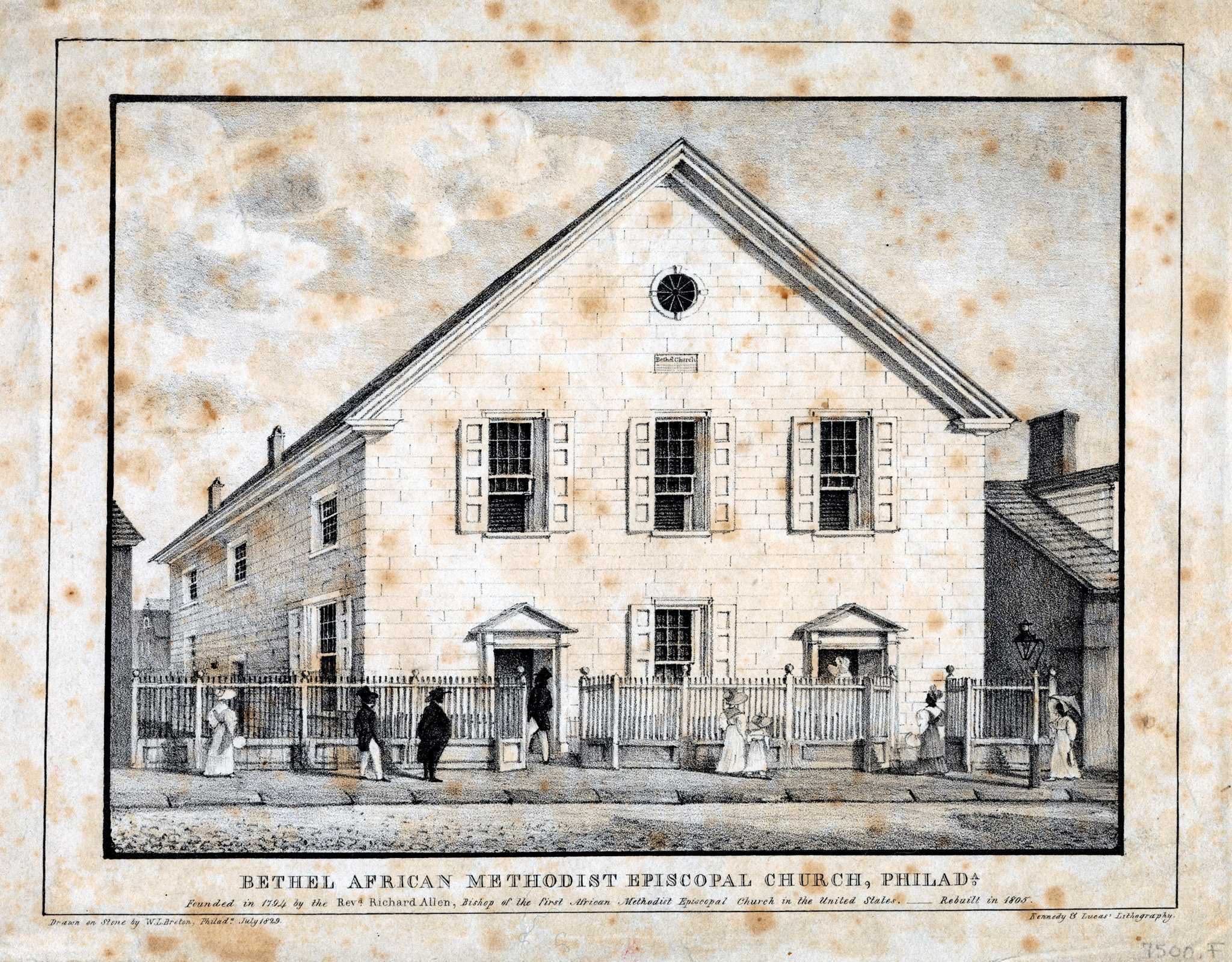Chapter 4
Free Communities of Color
After the Revolution, the free Black population grew exponentially. Whether by manumission, escape, military service, or birth, Black people found paths to freedom. In 1790 there were almost 60,000 free African Americans in the United States. By 1860, the population had grown to almost 500,000. Yet Black freedom was limited, and regulated. Free African Americans risked being kidnapped. They were required to carry badges or cards that identified them as free or face enslavement.
Facing racism, violence, and economic hardship, free Black people turned inward. They forged autonomous, tight-knit communities and neighborhoods—foundations for freedom.
Across the nation, free Black people created an infrastructure that helped them to survive. At the center was the Church, which guided all aspects of community life. It was an incubator for important institutions that strengthened and enriched the community. Free Black leaders organized fraternal orders, antislavery societies, and national conventions to uplift all Black people. Educational institutions like the Free African School and literary societies promoted intellect and pride. The Black press, including the first African American newspaper, Freedom’s Journal, was a vehicle to publicly challenge slavery and injustice. Black entrepreneurs, like the Toussaints of New York, provided philanthropic support.
Free African Americans responded to discrimination in different ways. From the impassioned cry of Henry Highland Garnet for “resistance” and the radical voice of David Walker, who encouraged violent resistance—to the global vision of John Russwurm, who supported emigration to west Africa—free African Americans built institutions and traditions that still stand today. They pushed the definition of freedom and forced the nation to face its contradictions.
Mapping Free Black Communities in Philadelphia
Philadelphia and its People in Maps
Philadelphia held one of the largest free Black communities in the new nation. Between 1790 and 1800, the city’s free Black population grew 176 percent. Through self-reliance, communal culture, and activism, the free community served as an example of what could be. Some community members were successful entrepreneurs, and many more served as laborers, domestics, and tradespeople. Faced with threats of violence from competing foreign immigrants and migrant white southerners, free Black people remained determined to exercise their freedom and strengthen their communities.
Richard Allen
Bishop Richard Allen
Born enslaved in Delaware in 1760, Richard Allen converted to Methodism at age 17. He eventually purchased his freedom and became one of the most influential religious leaders of his time. In 1783, he traveled along the East Coast preaching to both Black and white congregations. Allen settled in Philadelphia and joined the integrated St. George’s Church. The church gradually began to discriminate against its Black congregants. Frustrated, Allen founded the African Methodist Episcopal denomination and the Mother Bethel A.M.E. Church.
Bishop Richard Allen's Money Box
Bishop Richard Allen's Money Box
Bishop Richard Allen's Money Box
An outspoken advocate for freedom and equality, Richard Allen became one of the most influential leaders of free and enslaved Black people. Bishop Allen and Rev. Absalom Jones founded the Free African Society, a benevolent organization that served the spiritual, financial, and practical needs of community members.
Early Days of African Methodism

We will never separate ourselves voluntarily from the slave population . . . they are our brethren . . . there is more virtue in suffering . . . with them, than fancied advantages for a season.
Resolution of Free Black Convention at Bethel A.M.E. Church, 1817
Mother Bethel A.M.E. Church
Mother Bethel A. M. E. Church, Philadelphia
Built in 1794, Mother Bethel African Methodist Episcopal Church was attended by free people of color throughout Philadelphia. The church served as a safe place for many vital activities in addition to worship: sharing local news, mutual support, leadership and community development, studying and teaching, and political organizing. Churches throughout the North and South provided an infrastructure for survival and promoted the needs of the African American community, including free and enslaved people.
Black Land Ownership
Land Indenture for Bethel Church
During the colonial period, free Black people owned and conveyed land throughout the colonies, until the creation of laws limited such freedom and access to capital. A land deed shows that free African Americans owned the Mother Bethel African Methodist Episcopal Church building and the land it stood on. This strengthened the position of free Black people in Philadelphia and provided capital to finance community ventures.
Land Conveyance by Heber and Hager Honestman
Land ownership meant power. Formerly enslaved Heber Honestman and his wife Hagar conveyed 10 acres of land to Nathan Hodges in western Massachusetts as indicated in a land document dated 1732. In Pennsylvania, poor white non-landowners were denied the right to vote while landowning free Black men legally voted until 1838, when the roles were reversed. Robert Purvis, a successful black businessman and community leader, wrote a response in the Appeal of Forty Thousand Citizens, Threatened with Disfranchisement, to the People of Pennsylvania: “. . . our right under the Constitution has been more precious, and our deprivation of it will be the more grievous, . . . a scheme which comes to us in the guise of Christian benevolence.”

The prejudice of race appears to be stronger in the states which have abolished slavery than in those where it still exists; and no where is it so intolerant as in those states where servitude has never been known.
Alexis De Tocqueville, 1835
